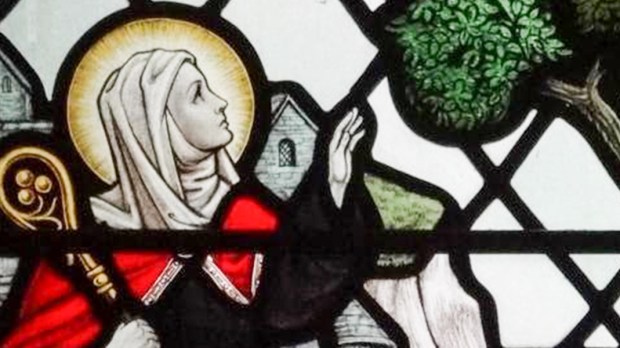It has been 135 years since renovations at the parish church of St. Mary and St. Eanswythe led to the discovery of bones, but now modern technology has helped identified them to be from St. Eanswythe, a 7th-century English saint who is said to have created the first Christian monastic community in England.
St. Eanswythe, the granddaughter of King Ethelbert — the first English king to convert to Christianity — is the patron saint of Folkestone, where she is said to have founded the Benedictine Folkestone Priory around 660. Her remains are not only the oldest yet found of any English saint, but they are also the oldest example of remains of an English royal relative.
The Benedictine Folkestone Priory was the first women’s monastery to be founded in England. During its construction, St. Eanswythe was courted by a pagan prince who wished to marry her. Many thought she would follow in the footsteps of her aunt, St. Ethelburga, who married the pagan King Edwin, but St. Eanswythe rejected his advances. Instead, she chose to live a monastic life with her companions at Folkestone Priory.
The Guardian reports that the analysis came after the team received a grant from the National Lottery Heritage Fund. The church building was closed for five days for the testing, which found that the bones accurately dated to the time of St. Eanswythe’s life. Furthermore, they were able to determine that the bones were most likely from a noble, as there was no indication of malnutrition.
These findings were confirmed by Queen’s University Belfast, where more testing was conducted. Andrew Richardson of the Canterbury Archaeological Trust commented to the Guardian:
“It now looks probable that we have the only surviving remains of a member of the Kentish royal family, and one of the earliest Anglo-Saxon saints. There is more work to be done to realize the full potential of this discovery.”
They are currently waiting to see if they will get funding for more tests on the relics, including DNA testing. Meanwhile, the church is preparing to receive more pilgrims than before, as the early English saint is surging in popularity once more.

